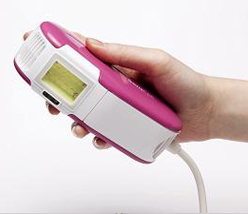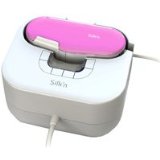What Is Silk’n HPL Hair Removal
 Many customers who heard of Silk’n SensEpil ask about the Silk’n HPL hair removal technology. Some of us may already know what is ‘laser’ or ‘IPL’ hair removal, but less people have come across the ‘HPL’ technology. In this short review, you can read on the HPL technology which is used by Home Skinovations – Silk’n hair removal systems.
Many customers who heard of Silk’n SensEpil ask about the Silk’n HPL hair removal technology. Some of us may already know what is ‘laser’ or ‘IPL’ hair removal, but less people have come across the ‘HPL’ technology. In this short review, you can read on the HPL technology which is used by Home Skinovations – Silk’n hair removal systems.
HPL (Home Pulse Light) Technology Since 2006
Laser light hair removal possibilities were discovered in 1998. With all the advantages, laser had a lot of disadvantages too. It was too expensive, to sophisticated and too dangerous to be used outside the Med-Spa hair clinics. Soon aesthetic engineers managed to develop other hair removal possibilities with light energy.
The main breakthrough happened in Israel, when the IPL was invented. Then Israeli scientists managed to create the same thermal effect with light pulses flashing high energy at the skin, causing permanent hair reduction.
Like the IPL (intense pulse light) technology, the HPL was also invented in Israel. The innovation of Israeli engineers have discovered and managed to create Technology and is a signed patent. The HPL hair removal technology was first released at 2006.
The Evolution Of Silk’n HPL
The beta phase tests for the HPL began at 2007, for five month it was tested on focus groups to see that it stands the safety and effective hair removal expectations. At the end of 2007 the HPL (Home Pulse Light) gets approved by the European CE Marking (kind of European FDA).
January 2008 – Silk’n HPL is FDA approved.
At October 2008 – The Silk’n Sensepil home removal device gets hair removal FDA approved too.
A year later at October 2009, Silk’n Sensepil gets the Health Canada approval too.
2011 – The Silk’n SensEpil won the 2011 About.com Readers’ Choice Awards – for the Best Hair Removal System!
HPL Home Pulsed Light Explained
 The HPL is very similar to the IPL and laser hair removal technologies. The light bursts which are projected from the Silk’n Sensepil device, heat the melanin inside the hair follicle and disables further growth.
The HPL is very similar to the IPL and laser hair removal technologies. The light bursts which are projected from the Silk’n Sensepil device, heat the melanin inside the hair follicle and disables further growth.
The Silk’n HPL uses a low energy pulse (compared to laser or clinic equipments) of 5J/cm2. These are Five Joules per square Centimeter. Just for comparison Tria Laser has up to 24J/cm2 at it’s highest energy level.
The Skinovations designers of the Silk’n SensEpil have been mysteriously using the term “acoustic effect” as part of their description of the Home Pulse Light (HPL) technology. I have searched the term “acoustic effect” when it comes with hair removal systems, and there is not enough information to understand what they mean.
I have emailed a question to Skinovations for further explanation, what is the ‘acoustic effect’ and what does it do. I received an answer (great customer support!) that the Electromagnetic waves (light) causes a shiver movement at the hair, this movement causes the hair to heat beyond the light-melanin effect.
HPL Vs IPL
Actually there is no significant difference between IPL and HPL. It seems that two teams of engineers have accomplished similar results, but once the IPL was patented, the HPL needed to be re-branded and patented too. The two hair removal technologies use low power energy (unlike laser) at high repetition rate.
The two technologies need the same safety measures when used at home for hair removal, they are both safe for skin types 1-4 (Fitzpatrick scale). Silk’n SensEpil is highly rated by users (2011 About.com reader’s award) and with long lasting hair reduction results is is one of the top hair removal systems for home use.
